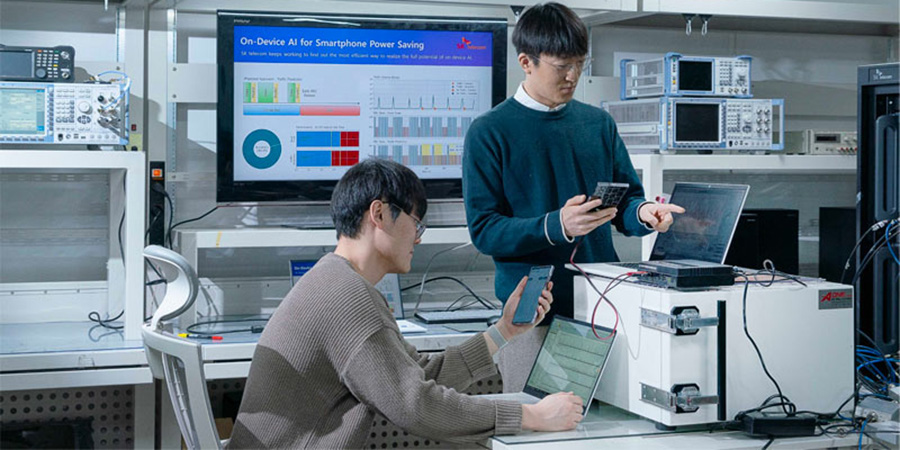SK Telecom has announced that— in collaboration with MediaTek (a global application processor manufacturer) and Nota AI (a startup specializing in AI lightweighting)— it has developed a smartphone power-saving technology that uses on-device AI.
On-device AI involves running artificial intelligence algorithms directly on user devices rather than relying on external servers. This approach offers users greater control over their data, as it remains stored and processed locally. Users can feel more comfortable with data personalization, knowing their information stays on their device and isn’t sent to the cloud. They retain the ability to choose what data to share and how it’s used, giving them a sense of empowerment over their digital experiences.
The device transmits and receives data while connected to the base station, and even after data transmission/reception is complete, the device remains connected to the base station for a set amount of time to standby for future data, resulting in non-negligible power consumption.
On-Device AI-Driven Technology Capabilities
In collaboration with MediaTek and Nota, SKT has pioneered an on-device AI-driven technology. This innovation enables devices to predict in real-time whether data transmission will occur within a specific timeframe. As a result, devices can sustain an optimal connection status with the base station, enhancing network performance. If the prediction indicates that data is likely to be transmitted, the device and base station will remain connected. On the other hand, if it believes that data is unlikely to occur, it will disconnect from the base station to save power.
The three companies concentrated on identifying the most efficient AI model and optimizing it using methods such as quantization and pruning. These techniques were employed to achieve low-latency and low-power operation specifically tailored for smartphones. They then tested the lightweight AI model on a real smartphone modem to ensure real-time operation, achieving a level of prediction accuracy that can result in smartphone power savings.
This innovation enables devices to predict data transmission in real-time, optimizing connectivity with base stations. Benefits include enhanced efficiency and responsiveness, ensuring consistent and reliable network connectivity for users. Moreover, users can enjoy smoother experiences with faster internet browsing and streaming, thanks to improved connectivity and real-time prediction capabilities. Additionally, the AI model operates with low latency and low power consumption, optimizing performance while conserving battery life on smartphones. Overall, this advancement represents a significant improvement in mobile technology, offering tangible benefits in connectivity, efficiency, and user experience.







